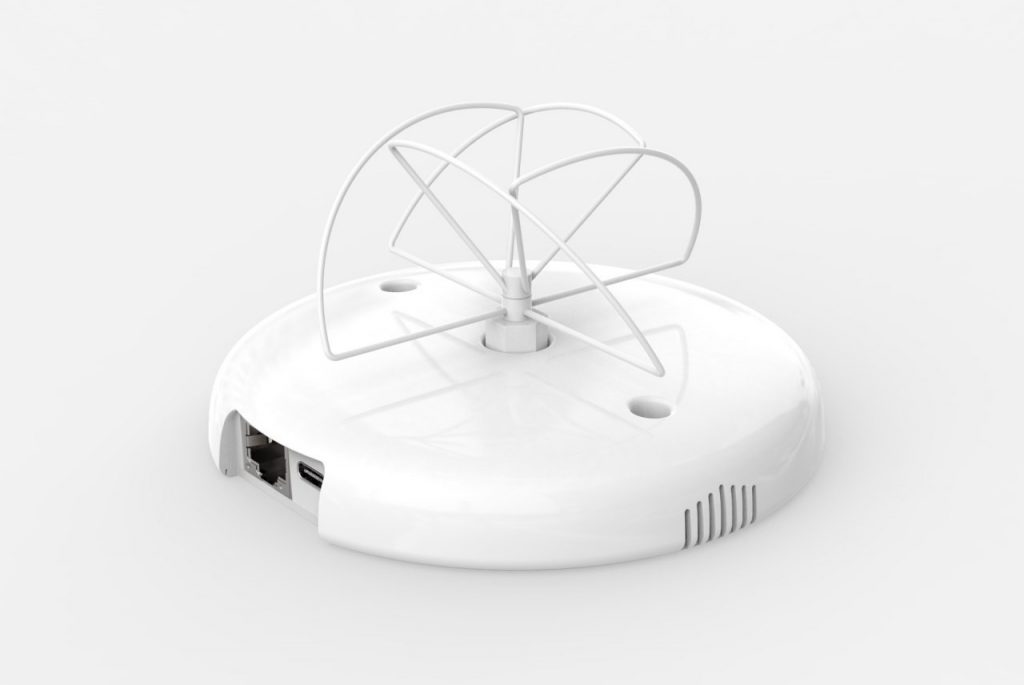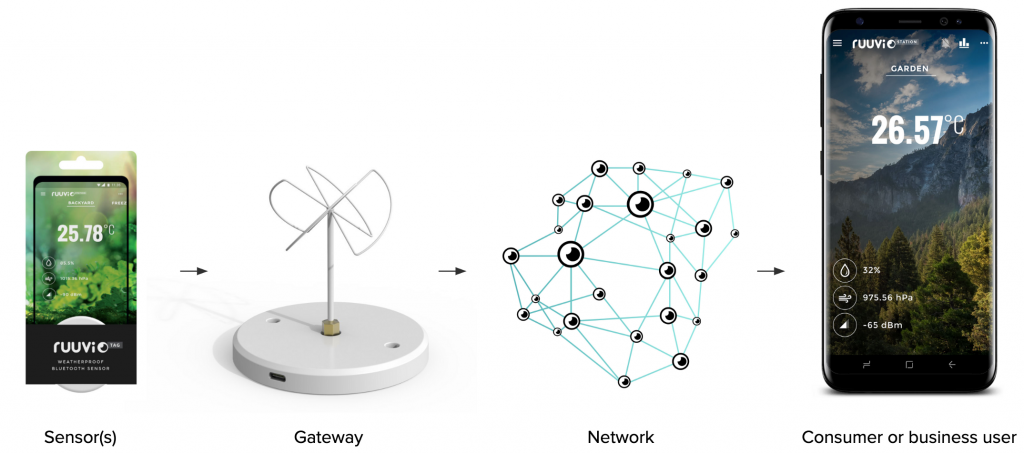RuuviTag wireless sensors communicate by broadcasting Bluetooth advertisement packets so nearby mobile phones can hear them. In many cases local sensors like these are good enough. But often it would be better to have information available through internet.
To achieve this, our users have built various types of gateway setups and backend solutions using, for example, Raspberry Pi boards. Setting up systems like these require some knowledge and time.
For business users, these kinds of gateways are not always reliable enough to be put on the field for example because of risks of corrupted memory cards or lack of proper FCC/CE certifications. Decreased range due to tiny internal antennas can potentially destroy the whole business case.
Ruuvi Gateway is built to address all these issues hands down.

Note: The project originally started on our forum under the working name Ruuvi Dongle and has now been renamed to Ruuvi Gateway.

Superb Antenna
In the beginning of the project we were planning to only use internal antennas and make the gateway to look like a tiny USB dongle. But it became clear to us that what the market is truly lacking is a reasonably priced and reliable BLE-WiFi gateway with extraordinary antennas. So, we decided not to make any compromises with the Bluetooth antenna.
Ruuvi Gateway supports external antennas. The example in the visual illustrated is a circular polarised cloverleaf antenna.
- Bluetooth (nRF52), external antenna
- Low noise amplifier
- WiFi (ESP32), internal antenna
- Ethernet (10/100 Mbit/s)
- USB-C for power input and flashing ESP32
- Ruuvi Connector expansion ports
- Web user interface with MQTT and HTTP POST configuration options
Circuit Board Design
I’ve designed the PCB using KiCad. Its overall dimensions are about 10 x 5 cm. It has an SMA antenna connector in the middle (nRF52) and ESP32 is equipped with an Inverted-F antenna (IFA).
To maximise the reception, we decided to use a low-noise amplifier made by Skyworks that has a superior 2 dB noise figure. This means that having one between the external antenna and nRF52 chip can potentially enhance the sensitivity by up to 5-10 dBm. Even the weakest signals will be efficiently amplified and fed to the Nordic’s chip.

Just like RuuviTag, the gateway electronics design is open-source. Design files will be available on our GitHub organisation later.
Firmware
Also the firmware projects are open-source. Contributors can be found on GitHub.
ESP32 firmware:
https://github.com/ruuvi/ruuvi.gateway_esp.c
nRF52 firmware:
https://github.com/ruuvi/ruuvi.gateway_nrf.c
Would you like to have one?
Ruuvi Gateway is the solution for wireless measuring from all over the world! Read your sensors’ data from anywhere you are with Ruuvi Gateway and our cloud service.